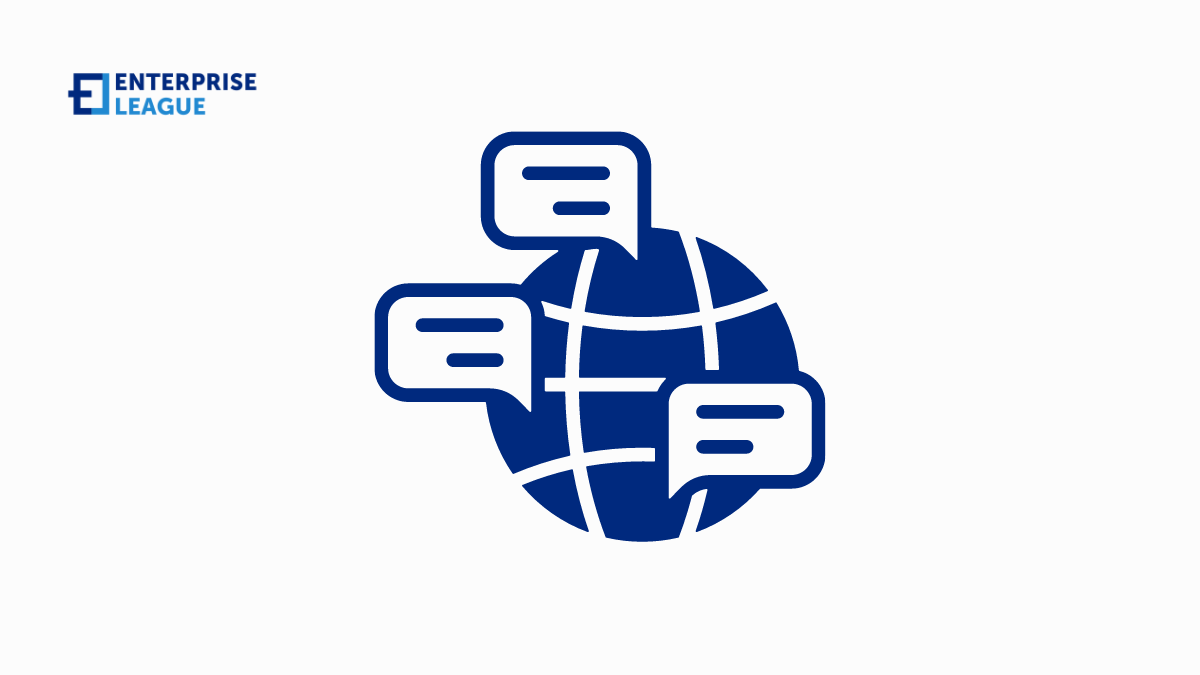Breaking down language barriers: Building unified teams in multilingual workplaces
March 28, 2024

The multilingual workplace, once an exception, is now a norm across various industries, from tech startups to multinational corporations. This new reality brings with it a rich tapestry of benefits, including enhanced creativity, access to a broader talent pool, and the ability to navigate global markets with greater finesse.
However, this diversity also presents its own set of challenges, most notably in communication. Language barriers can lead to misunderstandings, create feelings of exclusion among team members, and ultimately, impact the team’s ability to collaborate effectively. These challenges, if not addressed, can hinder a team’s performance and morale, overshadowing the benefits of a diverse workplace.
By addressing the challenges head-on, teams can unlock the full potential of their multilingual makeup, transforming potential obstacles into opportunities for growth and innovation.
Understanding the impact of language barriers on team dynamics
Language barriers in the workplace go beyond the occasional misunderstanding or request for clarification; they can fundamentally alter the dynamics of a team, affecting everything from daily communication to the overall cohesion and productivity of the group. When team members struggle to communicate effectively due to language differences, the fallout is multifaceted, impacting not just the workflow but the social fabric of the team itself.
- Misunderstandings and conflicts: Even simple tasks can become complicated when instructions or expectations are lost in translation, leading to errors and inefficiencies. These misunderstandings can breed frustration and conflict, not only slowing down project timelines but also eroding trust among team members.
- Reduced Collaboration and innovation: Collaboration is the cornerstone of innovation, requiring open and seamless communication. Language barriers can stifle the free flow of ideas, making it difficult for team members to share insights or brainstorm solutions. This reduction in collaborative synergy limits the team’s ability to innovate and solve problems creatively.
- Feelings of isolation and exclusion: Perhaps one of the most significant impacts of language barriers is on team morale. Employees who struggle to communicate may feel isolated, undervalued, or less a part of the team, which can lead to decreased engagement and satisfaction at work. This sense of exclusion not only affects individual well-being but can also influence team dynamics, as disconnected team members are less likely to contribute fully to team efforts.
- Impact on team performance and employee satisfaction: The cumulative effect of these issues can be seen in the team’s performance and overall employee satisfaction. Studies and surveys have consistently shown that effective communication is linked to higher levels of job satisfaction, engagement, and productivity. Conversely, when communication barriers exist, teams are more likely to experience delays, lower morale, and higher turnover rates.
Recognizing these challenges is the first step towards addressing them. By understanding how language barriers can impact team dynamics, leaders and team members can begin to implement targeted strategies to mitigate these issues, paving the way for a more inclusive, collaborative, and high-performing team environment.
Effective communication strategies for multilingual teams
To harness the full potential of a multilingual workforce and mitigate the challenges posed by language barriers, adopting effective communication strategies is crucial. These strategies not only facilitate clearer communication but also foster an inclusive atmosphere where every team member can thrive. Here are practical approaches to enhancing communication in multilingual teams:
- Establish a common working language: While it may seem straightforward, designating a common working language for official communications can significantly reduce misunderstandings. This approach ensures that all team members are on the same page, whether it’s in meetings, emails, or project documentation. However, it’s important to choose a language that everyone is reasonably comfortable with, acknowledging that for some, this may require additional support and learning.
- Encourage clear and simple language: In multilingual settings, complex jargon, idioms, and slang can easily lead to confusion. Encouraging the use of clear, simple language and avoiding unnecessary jargon can make communication more accessible to all team members. This practice not only aids those who are non-native speakers of the common working language but also clarifies communication overall.
- Utilize translation tools and services: Technology offers a myriad of solutions to overcome language barriers. Machine translation software and services can be invaluable for translating documents and emails or even in real time during meetings. While not perfect, these technologies are continually improving and can significantly aid in bridging the communication gap.
- Foster a culture of patience and empathy: Building an environment where patience and empathy are valued is essential for multilingual teams. Encouraging team members to be patient with non-native speakers and showing empathy toward the challenges they face can promote a more supportive team collaboration atmosphere. This culture shift can make a substantial difference in how team members interact and understand each other.
- Implement regular language and cultural training: Offering language training for team members can be a long-term investment in reducing language barriers. Additionally, cultural training can help team members understand the nuances of different communication styles and practices, leading to more effective and respectful interactions. These training sessions not only improve language skills but also foster a deeper appreciation for diversity within the team.
By implementing these strategies, teams can significantly improve their communication and collaboration, turning linguistic diversity from a potential obstacle into a source of strength and innovation. These efforts pave the way for a more inclusive and cohesive team environment, where every member’s contributions are valued and understood.
Team bonding activities to enhance language skills and cultural understanding
- Language exchange sessions: Organizing informal language exchange sessions among team members can be an excellent way for employees to teach and learn from each other. Pairing speakers of different languages to learn basic phrases or cultural nuances promotes empathy and understanding, making communication smoother and more effective.
- Cultural celebration days: Designate days where team members can share their cultural backgrounds, whether through food, stories, or traditional activities. These celebrations are a fun way to educate the team about the diverse cultures represented within the workplace, breaking down stereotypes and fostering a sense of belonging and appreciation.
- Team-building exercises focused on communication: Tailor team-building exercises to require clear communication for success, such as problem-solving challenges or trust-building activities. These can be designed to emphasize the use of the common working language or to encourage non-verbal communication, highlighting the importance of clear and effective communication in all its forms.
- Professional development workshops with a twist: Host workshops that not only focus on professional skills development but also incorporate elements of language learning and cultural awareness. For instance, a public speaking workshop can include exercises in the common working language, while a workshop on negotiation skills can cover cultural differences in negotiation styles.
Through these activities, team members can deepen their understanding of each other’s languages and cultures, leading to a more empathetic and cohesive team environment. By prioritizing language skills and cultural understanding, organizations can effectively turn diversity into a unifying strength, enhancing team dynamics and overall productivity.
Conclusion
Ultimately, breaking down language barriers and building unified teams in multilingual workplaces is about more than just improving productivity; it’s about creating a more inclusive, empathetic, and global-minded workforce. As companies continue to navigate the complexities of the global market, the ability to effectively unite team members across linguistic and cultural divides will remain a key competitive advantage. By embracing this challenge, organizations can unlock the full potential of their diverse teams, paving the way for a future where the multilingual workplace is not only common but a cornerstone of global business success.
More must-read stories from Enterprise League:
- Learn about how micromanaging can hurt your productivity.
- Tactics for using TikTok marketing for your small business successfully.
- Key factors in determining salary increases for your employees.
- Creative spiritual business ideas that you can start today.
- Are there any benefits of having a 80 hour work week?
Related Articles
How cloud technologies are revolutionizing small hospitality businesses
So let’s rifle through the perks cloud technologies provide and give you the motivation to move forward with the next phase of digital transformation.
The deep psychological effects of sales and advertising
In this article we will explore the deep psychological effects of sales and advertising that average person is exposed to on daily basis for commercial gain.
28 most exciting media startups to follow closely (2024)
Check out these 28 most promising media startups that are making the media industry more engaging, interactive, and enticing for the worldwide audience.
How cloud technologies are revolutionizing small hospitality businesses
So let’s rifle through the perks cloud technologies provide and give you the motivation to move forward with the next phase of digital transformation.
The deep psychological effects of sales and advertising
In this article we will explore the deep psychological effects of sales and advertising that average person is exposed to on daily basis for commercial gain.





